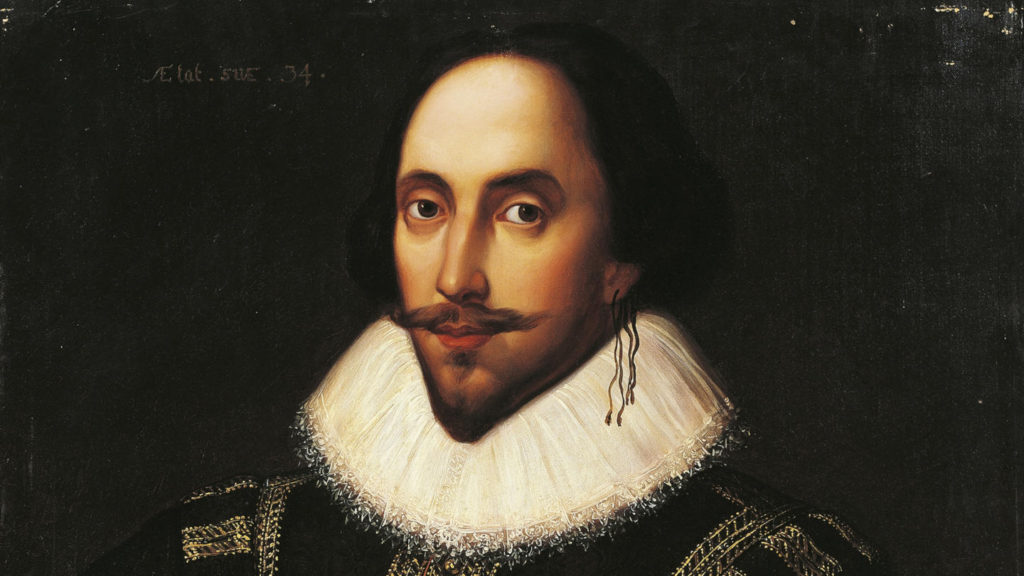Table of Contents
THE WORKS
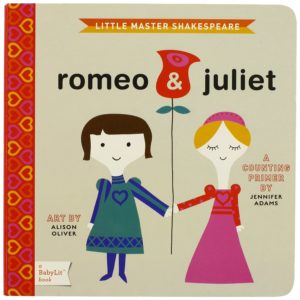
|
Shakespeare for babies? By author Jennifer Adams and artist Alison Oliver, Romeo and Juliet: A BabyLit Counting Primer (Gibbs Smith, 2011) is a stylishly illustrated counting book with Shakespearean motifs (beginning with ONE BALCONY). Cute, but don’t expect a whole lot of Shakespeare. For ages 1-3. |
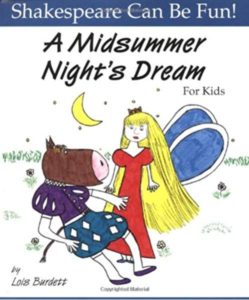
|
Titles in Lois Burdett’s Shakespeare Can Be Fun picture-book series (Firefly Books) include Hamlet for Kids, Macbeth for Kids, The Tempest for Kids, and many more. In each, an abbreviated plot of the play, delivered in rhyming couplets, is paired with great illustrations by Burdett’s early-elementary students. For ages 5-8. |
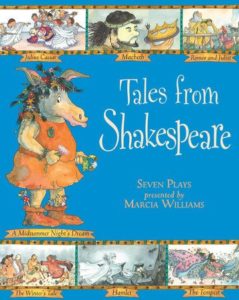
|
Marcia Williams’s Tales from Shakespeare (Candlewick Press, 2004) presents the plots of seven Shakespearean plays in a clever comic-book-style format, with the story line in boxes beneath the pictures and supporting dialogue in cartoon bubbles. The illustrations, which are wonderful, include lots of detailed and colorful little people; and the borders of the pages depict an Elizabethan theater audience, from the rowdy pit to the elegant boxes. Plays include Hamlet, Macbeth, Romeo and Juliet, and a truly gorgeous Midsummer Night’s Dream. For ages 7 and up. |
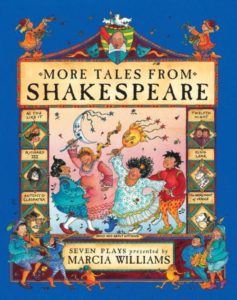
|
A sequel, More Tales from Shakespeare (Candlewick, 2005) includes seven more plays in the same format, among them Twelfth Night, King Lear, As You Like It, Much Ado About Nothing, The Merchant of Venice, Richard III, and Antony and Cleopatra. |
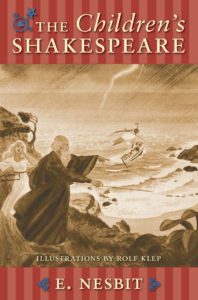
|
E. Nesbit’s The Children’s Shakespeare (Academy Chicago Publishers, 2000), originally published in 1938, contains simple prose re-tellings of eleven of the plays, all of which read like enthralling fairy tales. Nesbit’s Romeo and Juliet, for example, begins “Once upon a time there lived in Verona two great families named Montagu and Capulet. They were both rich, and I suppose they were as sensible, in most things, as other rich people. But in one thing they were extremely silly.” For ages 7-11. |
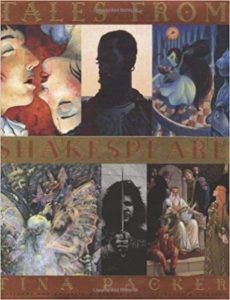
|
Tina Packer’s Tales from Shakespeare (Scholastic, 2004) is a beautifully designed 192-page collection of prose retellings of ten of Shakespeare’s best-known plays, each with an illustration by a popular children’s book artist. For ages 8-12. |
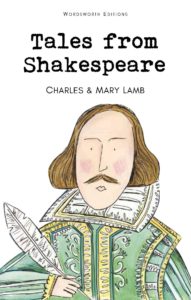
|
Charles and Mary Lamb’s Tales from Shakespeare was originally published in 1807, these prose versions of the plays still charm today. Now available in many editions. For ages 10 and up. |
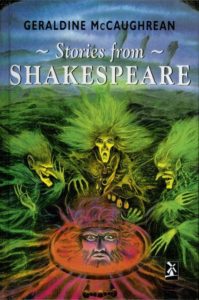
|
Geraldine McCaughrean’s Stories from Shakespeare (Orion, 2017) retells ten of Shakespeare’s plays in kid-accessible prose, with a cast list and assorted quotations. For ages 9-12. |
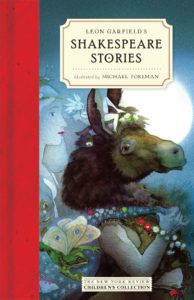
|
Leon Garfield’s Shakespeare Stories (NYR Children’s, 2015) has prose versions of 21 Shakespearean plays. A masterful interweaving of Shakespeare’s own words with lively modern prose. For ages 9 and up. |
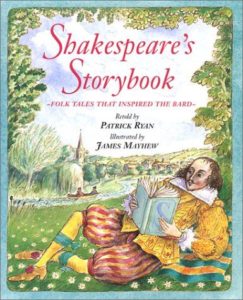
|
Where did Shakespeare get his ideas? Patrick Ryan’s Shakespeare’s Storybook (Barefoot Books, 2006) is an illustrated collection of the traditional stories that led to seven of Shakespeare’s plays. For example, “The Devil’s Bet” underlies The Taming of the Shrew and “Cap-o-Rushes” may have inspired King Lear. Each story is preceded by a discussion of its influence on the play. For ages 9 and up. |
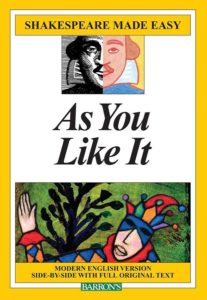
|
Alan Durband’s Shakespeare Made Easy Series (Barron’s Educational Series) is targeted at Shakespeare-phobic high-school students: each play is presented with the original text on one side of the page and, on the facing page, a “translation” into modern English. (I’d urge teenagers to at least try the original before settling for the translation – “Hey! You got a knife?” just doesn’t have the same ring.) |
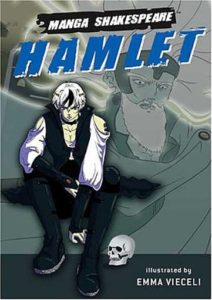
|
The Manga Shakespeare series (Amulet Books) – one of the latest in Shakespeare interpretations – pairs manga-style illustrations and a comic-book format with right-from-the-text Shakespearean dialogue. (Check out Macbeth, shirtless, with sword and purple pants, and Romeo and Juliet, with motorcycle.) For ages 12 and up. |
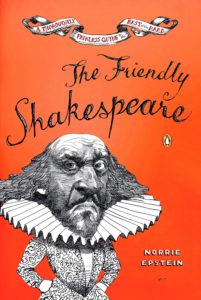
|
Norrie Epstein’s The Friendly Shakespeare (Penguin Books, 1994) presents – in 550 nicely designed pages and a very friendly manner – all kinds of fascinating information about Shakespeare’s life, times, and plays. Included is almost everything you could possibly want to know about Shakespeare: who he really was and what he might have looked like, the histories of each of the plays from conception to the present day, the workings of the Elizabethan stage, modern Shakespearean spin-offs, timelines and chronologies, famous quotations, irresistible trivia. A great resource for teenagers and adults. |
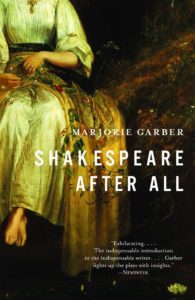
|
Marjorie Garber’s (enormous; it’s over 1000 pages long) Shakespeare After All (Anchor, 2005) – based on her college lecture series – is a scholarly analysis of all of Shakespeare’s works, one chapter per play. For serious and devoted Shakespeare students. |
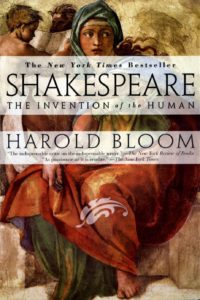
|
Harold Bloom’s massive and erudite Shakespeare: The Invention of the Human (Riverhead Trade Books, 1999) provides in-depth analyses of each of the plays and discusses Shakespeare’s role in the evolution of the English language and the development of Western thought. For older teenagers and adults. |
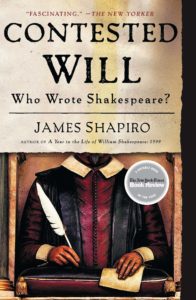
|
James Shapiro’s Contested Will: Who Wrote Shakespeare? (Simon & Schuster, 2010) covers arguments for and against the many claimants for authorship of Shakespeare’s plays, and discusses how the plays themselves may reveal the truth about their author. For teenagers and adults. |
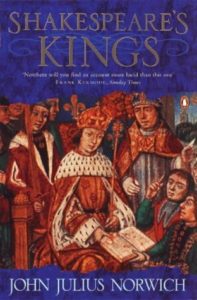
|
John Julius Norwich’s Shakespeare’s Kings (Scribner, 2001), subtitled “The Great Plays and the History of England in the Middle Ages,” is an intriguing comparison of Shakespeare’s plots to documented history. A thoroughly interesting read for teenagers and adults. |
| Kids Love Shakespeare has adaptations of several plays (Twelfth Night, Much Ado About Nothing, A Midsummer Night’s Dream, and Romeo and Juliet) for elementary-level students (for sale and unfortunately expensive; a pdf download costs $45). More affordable is a CD of Shakespearean songs (“Soul Cake & Other Songs,” $10). See the Activities and Resources page for a great selection of projects, among them making character portraits, putting on a Shakespearean puppet show, and making an illustrated Shakespearean timeline. | |
| Absolute Shakespeare has the texts of all the plays and sonnets on line, a selection of famous Shakespearean quotes, a list of Shakespearean film adaptations, a Shakespeare timeline, and a “grueling” Shakespeare quiz. | |
| Having trouble with all those varlets and forsooths? No Fear Shakespeare pairs the original Shakespearean text with side-by-side translation into modern English. Includes 24 plays, plus the sonnets. | |
| The complete works with associated learning materials for iPhone or iPad. See the app here. | |
| From the Learning Network, Teaching Shakespeare with the New York Times has a list of creative lesson plans, among them “To Freeze or Not to Freeze,” in which kids create “frozen tableaux” of scenes from the plays; and “The Bard in the Big Apple,” in which kids experiment with setting Shakespeare’s plays in modern times. |
